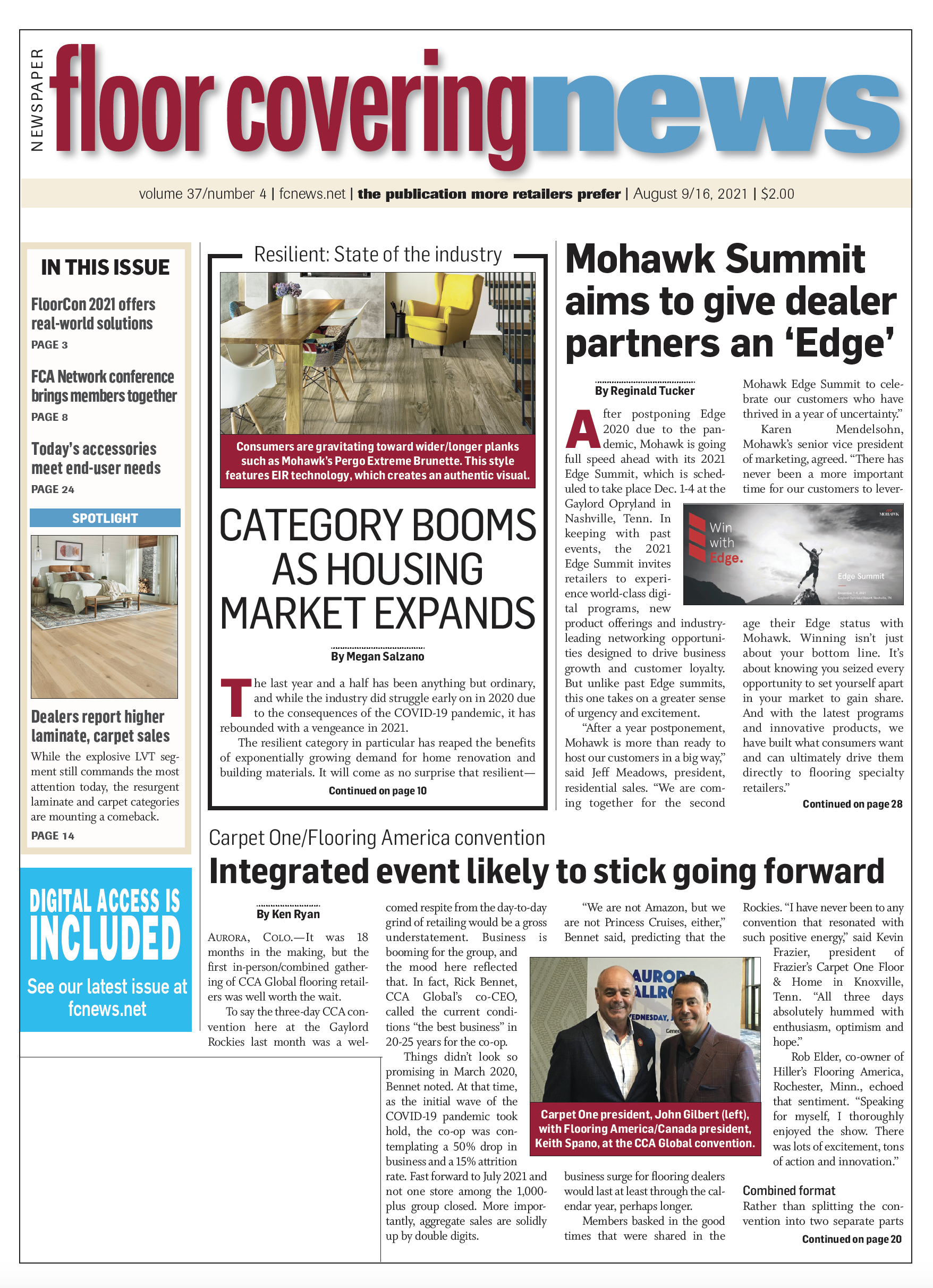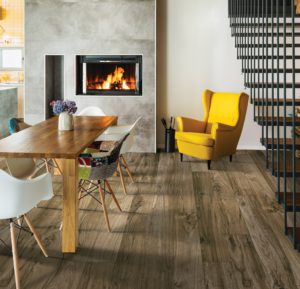
The last year and a half has been anything but ordinary, and while the industry did struggle early on in 2020 due to the consequences of the COVID-19 pandemic, it has rebounded with a vengeance in 2021.
The resilient category in particular has reaped the benefits of exponentially growing demand for home renovation and building materials. It will come as no surprise that resilient—led mostly by the rigid core sub-segments—registered gains in 2020 while many other flooring categories did not. FCNews research showed the category generated $6.589 billion in sales in 2020—an industry-leading 21.3% increase over 2019’s $5.433 billion.
This year shows even more promise, according to suppliers. “From my perspective, the industry is up for the year,” explained Ed Sanchez, vice president of product management, resilient, Mohawk. “There has been strong demand across all channels as business reopens and the home building/real estate market has been booming. I expect to continue to see resilient products take share from other categories as innovation in the category delivers differentiation and value for consumers.”
David Thoresen, senior vice president, product and innovation, Armstrong Flooring, noted that resilient products continue to gain more share and have become extremely popular in the home. “There’s a case to be made for resilient flooring in every room of the house,” he explained. “Bedrooms are still primarily carpet, but beyond that, resilient floors are extremely popular options with consumers.”
Ana Torrence, hard surface category manager, Engineered Floors, pointed to resilient’s design and performance story to support its popularity. “Resilient continues to be the fastest growing category in flooring due to the beautiful visuals combined with the waterproof attributes and easy care that consumers demand.”
There are two main drivers of the category’s continued popularity and growth in 2021—as well as the growth of the entire industry: the pandemic and the current housing market, two topics that are intertwined. “The recent pandemic has played a huge role in the unprecedented rise of resilient sales,” explained Steve Ehrlich, vice president of sales and marketing, Novalis. “When pairing the fact that our customers spent more time at home than ever before last year and thus craved a refresh of their surroundings/décor with elevated disposable income due to canceled vacations, no dinners out and school and extracurricular activities coming to a screeching halt, it was the perfect storm to make all residential remodeling—including resilient sales go through the roof.”
Raj Shah, president, MSI, agreed, noting, “COVID-19 caused a refocus on the home. We are seeing renovations hitting record numbers as well as new home sales continuing to increase. With low interest rates the affordability of home renovations has never been better.”
David Sheehan, vice president, residential resilient at Mannington, added that the momentum that began on the residential side of the business in 2020 continues today. “Most of the dealers we speak to indicate that they are booked eight to 10 weeks out,” he explained. “Consumers continue to allocate a strong percentage of discretionary funds toward the home, and the entire flooring industry is benefiting from this increased demand.”
Supply chain challenges
There’s no question that supply chain challenges have plagued the industry for months now. The challenges in sourcing material have grown due to a number compounding reasons, according to Blakley Satterfield, residential LVT product manager, Mannington. “Many manufacturers pulled back on sourcing material at the onset of the pandemic, believing we were headed for an economic crisis,” she explained. “Lost labor time in plants and ports due to quarantine were unable to produce and ship materials as orders began to rise. The temporary closure of the Suez Canal and sharp decrease in readily available, domestically manufactured goods due to raw material constraints exacerbated the already complicated model. With an industry-wide backlog that will take time to improve, strong supply and demand has led to price increases on all flooring categories at rates never seen.”
In addition to industry-specific constraints, broader supply challenges have also made an impact. Originally sparked by the pandemic shutdowns in 2020, instability in ocean freight and congested U.S. ports, for example, have played a role in the ongoing supply chain crisis. “Due to high demand from the influx of government stimulus, demand on products produced in Asia has increased beyond the vessel capacity,” EF’s Torrence said. “During COVID-19, many steam ship lines took older ships out of circulation. Currently, it is very difficult to secure space and it has become literally an auction to bid for space. Transit times are longer and port congestion due to staffing issues is adding to the supply chain delays. Ocean rates are up four-to-five times versus last year.”
Dick Quinlan, vice president of sales and marketing, Wellmade, agreed, noting that freight increases of 200% or more are commonplace. “Demand for many products produced overseas has dramatically increased, overwhelming the available international shipping capacity and resulting in substantial delays while loading and off-loading shipments. As a result, supplier price increases continue to be announced to cover escalating costs.”
Bill Anderson, CEO, Karndean Designflooring, also noted that supply chain disruptions and increasing transportation and material costs have played a big role in the overall sourcing activities related to the resilient category this year. “This has unfortunately led to higher costs and longer lead times, which are disrupting our normal sourcing and stock plans,” he noted. “We are working very hard to build stock to get back to our expected service levels, which our customers have been accustomed to over the years.”
Supply challenges within the category over the last year have highlighted the ever-growing need for domestic manufacturing, particularly in the resilient flooring category, which is still heavily reliant on imports. For several years now, manufacturers have announced plans to add or expand U.S. capacity for resilient production. “There certainly has been a focus on the growth and development of additional U.S. capacity,” Mohawk’s Sanchez said. “For many new plants, the pandemic meant delays in startup for many reasons (equipment, travel, staffing, etc.). The American consumer and especially builders have come to recognize the value of short supply chains and the value that a manufacturer delivers by making close to their consumer. The pandemic and resulting supply chain challenges has only reinforced the importance and value of U.S. manufacturing.”
Drew Hash, vice president of hard surface category management, Shaw Residential, also noted that supply chain diversification is critical to keeping up with growing demand and better serving customers and end users. “Quicker lead times and greater influence over the supply chain are critical in today’s volatile environment,” he said. “Having both global and stateside manufacturing operations makes Shaw—and our customers—less vulnerable to market disruptions, allowing us to better meet historically high consumer demand. Currently, expanding domestic SPC production to meet ever-increasing demand is a top priority for most manufacturers, including Shaw.”
Wellmade is also putting a focus on domestic production of rigid core products. Its new plant in Cartersville, Ga., will offer long-term capacity of over 300 million square feet of HDPC rigid core vinyl planks per year. The new plant is scheduled to come online in September and will play a significant role in providing added domestic capacity needed to support growing demand in the U.S. while providing timelier product availability and freedom from the ongoing challenges of freight, international tariffs and fluctuating dollar valuations, according to Quinlan.
“Added domestic production capacity will offer the benefit of shorter lead times, lower inventory and capital investment requirements, faster ship times and reduced obsolescence expense compared to offshore products,” he explained.
Novalis, too, has added manufacturing capabilities in Georgia, with a new manufacturing facility and innovation center in Dalton. “Our decision to open manufacturing in Dalton is reflective of the journey of our brand and our commitment to be closely connected to our customers,” Ehrlich said. “Novalis is a global company with customers all over the world. Speed to market is the biggest advantage in any decision to open a new location. The U.S. innovation center and manufacturing facility enables us to better service our U.S. customers while also helping to grow and support Dalton—a community rich in the history of flooring manufacturing.”
SPC continues to dominate
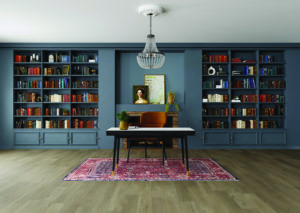
While the resilient category continues to dominate the flooring industry, it is the rigid core subsegment that leads the pack. FCNews research showed residential SPC grew from 30.8% of total resilient residential dollars in 2019 to a whopping 51.9% in 2020. In terms of its command of the LVT segment in which it resides, 2020 saw an increase from 37% to a staggering 59.2%. In terms of dollars, it generated $2.516 billion of the LVT market’s $4.25 billion in 2020.
As such, SPC remains the dominant player in the luxury vinyl game, potentially at the expense of its sister sub-segments. MSI’s Shah, for example, said he expects to see SPC continue to take share from WPC. “Ultimately, it’s a lower-cost raw material with no detriment in technical attributes for the consumer, whether they be residential or commercial. Almost all new manufacturing capacity in the United States and across the world is made for SPC.”
Suppliers agree SPC is propped up by its three main features—performance, aesthetics and price of entry, which give it a leg up against its sister sub-segments. “HDPC/SPC rigid core vinyl products continue to grow faster than LVT and WPC,” Wellmade’s Quinlan said. “The superior performance characteristics and greater ease of installation provided by HDPC/SPC rigid core vinyl will continue to drive increased sales and market share over LVT and WPC products.”
Novalis’ Ehrlich agreed, adding, “More and more market share is being given to SPC in the residential environment—customers are educating themselves and finding that it is a better product with more attributes (waterproof, dent resistant) at a comparable cost.”
However, many suppliers argue LVT and WPC also have their place. “All rigid core products have their place in the home, depending upon application and/or individual preference,” Shaw’s Hash said. “Each construction offers its own unique benefits: quiet and comfort for WPC; dent and impact resistance for SPC; and superior scratch resistance for mineral core products—in addition to all being 100% waterproof with simple installation and easy maintenance. Flexible LVT and sheet vinyl products still have a strong presence in other market channels and segments and meet distinct customer and/or end-user needs.”
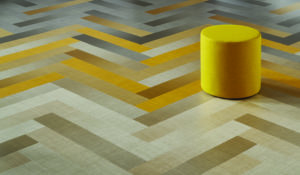
Mannington’s Satterfield agreed, explaining that WPC will hold its place in the category by “offering customers a thicker floating product that is softer and warmer underfoot and 30% quieter than SPC for use on a second story. Glue-down LVT, or traditional LVT, will continue to be a viable option for customers who need floors with no transitions, especially those with wheelchairs present in their home or large, open floor plans. I expect WPC to take on a role as the more luxurious of the three LVT constructions. The softness underfoot combined with better sound-dampening qualities allow WPC to compete well against SPC in residential applications.”
Karndean’s Anderson explained that all variations of LVT/P have done well and continue to do well for the company as long as preference and need are taken into account during the purchasing process. “Within our luxury vinyl product offering of glue-down, loose lay and rigid core, any format of our products can be installed in any room of the home, and so we encourage consumers to shop our floors by color and design first rather than by format. We are seeing gains across all three categories.”
Commercial trudges forward
While the residential side of the business experienced a boom in demand and, therefore, sales in the last year, the commercial side of the business did not fare as well. The healthcare, retail and hospitality segments all took a hit throughout the stay-at-home and restricted-travel phase of the pandemic. However, 2021 saw commercial make some gains as restrictions were lifted and widespread vaccine rollouts began.
“The commercial segment has definitely shown growth since the peak of the pandemic,” Mohawk’s Sanchez said. “Project work has started back up and companies are rethinking large team work areas and adapting them for a post-COVID-19 environment. Additionally, entertainment and hospitality have all started to reinvest as they prepare for the return of consumers.”
The regained momentum and pent-up demand in 2021 as projects once again moved forward as planned has allowed the commercial market to recover beyond initial expectations. “The commercial market has faced a tough road in 2020 and the first half of 2021 but is seeing a strong resurgence of activity not only on the ongoing projects but also new projects and the continuations of ones put on hold during last year because of the pandemic,” Novalis’ Ehrlich explained. “We are bullish on a 2022 expectation to really see all commercial markets pick back up everywhere in the U.S.”
Armstrong’s Thoresen agreed, noting, “Commercial is slowly coming back, and we’re happy to be seeing first signs of life in quite some time. While the market has been down, we feel new opportunities for renovation and construction are coming back.”
While amped-up activity was expected, suppliers say the growth rate has been better than expected. “We planned an ongoing recovery from 2020 after a solid fourth quarter last year,” explained Al Boulogne, vice president commercial rubber and sheet distribution, Mannington Commercial. “What has been surprising is the level of that recovery and how quickly it has arrived this year; 2021 has been a tremendous year so far in terms of customer activity.”
When it comes to which resilient products that account for the bulk of the activity, LVT remains the go-to option. FCNews research showed flexible LVT (including glue down, loose lay and click) accounted for the greatest activity with 61.6% share of the resilient commercial market’s $1.742 billion in sales and 53.6% of its overall volume. That’s up from 59.6% in dollars and 50.2% in volume in the year prior.
“Glue down, loose lay and SPC are all growing,” Novalis’ Ehrlich said. “SPC is gaining share in spaces that were once all specified as glue down. We believe SPC will continue to gain share in especially small and medium-size spaces with no rolling, heavy loads as well medium-size spaces that get upgraded every two to four years.”
However, sheet vinyl also remains a key product choice. “Sheet still has a place in resilient and is holding strong,” Mohawk’s Sanchez said. “There are segments of the business where sheet is the best solution and, as I like to say, it is the most waterproof flooring solution in the industry. The overall size of the market stays relatively steady.”
For Mannington Commercial, healthcare has been a great segment in 2021 and sheet is benefiting from that momentum, according to Boulogne. “Sheet vinyl is a very viable category for us and in the industry. Some of the benefits, like a significant reduction in number of seams and the fact that it can be heat welded, has brought sheet back into the spotlight again for a lot of our customers.”
Innovation abounds
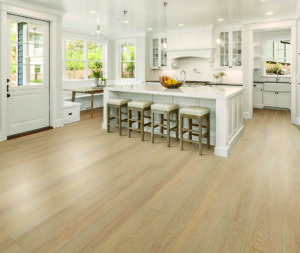
For the last several years, innovation in the resilient category has grown by leaps and bounds. From core capabilities to digital printing and design to enhanced cleanability and scuff, stain and scratch resistance, the possibilities are seemingly endless.
While 2021 has been anything but ordinary—much like its predecessor—it did not stop resilient flooring manufacturers from pulling out all the stops when it comes to innovation.
Mohawk, for example, recently unveiled Pergo Extreme Brunette from the Wider Longer collection. This style features EIR technology, which allows the embossing to follow the grain or pattern of the wood or stone décor to create authentic looks and deep textures. By following the natural grain or stone texture, EIR makes the product look and feel similar to a hardwood or stone product.
Mannington answered the call for innovation as well with the addition of Microban on its AduraMax, Rigid and Flex lines of LVT and Platinum Luxury Sheet Vinyl. The protection is built into the wear layer of the floor and helps protect 24/7 against the growth of bacteria. Floors with Microban remain 99% cleaner than untreated surfaces.
Armstrong recently introduced its 2.5mm LVT, which features a rounder, more finished edge, providing a more attractive look. Looking forward, the company also has new design opportunities at its Lancaster plant, which will offer more progressive looks.
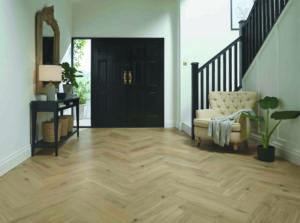
Shaw Floors’ Floorté Elite Series boasts a new embossing technique, or enhanced natural realism, that captures high and low gloss levels. It also promises superior scratch resistance against pet nails and other common household activity and is backed by a 15-year residential scratch warranty.
This fall, Karndean will continue to expand its rigid core offerings in 20 mil products across three different price points, Van Gogh, Korlok Select and Korlok Reserve ranges. The new Van Gogh rigid introductions will cross over to existing glue-down colors, while the Korlok Select and Reserve introductions will comprise both new and original Karndean designs.

